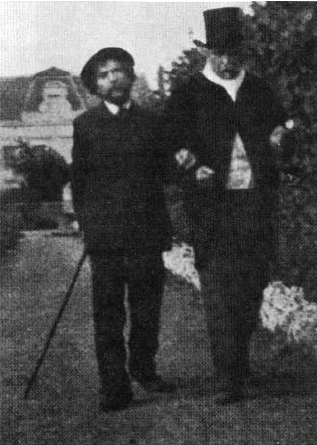Tabes dorsalis results from a syphilis infection that has gone untreated for decades. With the disruption and loss of nerve cells and fibers in and around the spinal cord, people with this condition can experience severe pain, altered sensation, unsteady gait and loss of coordination (ataxia), loss of hearing and vision, difficulty with verbal expression (aphasia), and dementia. After antibiotics were available to people with syphilis infections, tabes dorsalis became a relatively rare occurrence.
Here a classic biomedical description of tabes dorsalis is compared to descriptions taken from a biomedical journal with a historical focus on the subject.
The Biomedical
From: Berger, J. Neurosyphilis and the spinal cord. Journal of Nervous and Mental Disease. 2011; 199 (12): 912-913.
It is characterized by incoordination, pain, anesthesia, and various visceral trophic abnormalities. The clinical course [can be] divided into three phases, a ‘‘pre-ataxic’’ phase distinguished by severe lightening pains, Argyll Robertson pupils, a positive Romberg, loss of muscle stretch reflexes, and sensory loss. An ‘‘ataxic’’ phase is followed with worsening tabetic pain. The ‘‘terminal’’ or ‘‘paralytic’’ phase [is] signaled by severe spastic paraparesis and autonomic dysfunction.
p. 913
The Literary
From: In the Land of Pain by Alphonse Daudet, edited and translated by Julian Barnes, Alfred A. Knopf, New York, 2002.
The book is a memoir comprising mostly “notes” Daudet made during the late stages syphilis when he experienced tabes dorsalis. Some of the notes elaborate on the clinical descriptions of the syndrome, in particular pain, paralysis, and unsteadiness. A review of the book is posted here.
I sometimes wonder if I shouldn’t apply for a course of Pasteur’s inoculations: the strong analogy between my extreme bouts of pain, my furious shaking and writhing, my drowning-man contortions, and a fit of rabies.
pp. 16-17
Tonight, pain in the form of an impish little bird hopping hither and thither, pursued by the stab of my needle; over all my limbs, then right in my joints.
p. 28
Can’t go down a staircase if there isn’t a handrail; can’t walk across a waxed floor. Sometimes I feel as if I don’t own part of myself – the lower half. My legs get confused.
p. 41
I feel like some creature from mythology, whose torso is locked in a box of wood or stone, gradually turning numb and then solid. As the paralysis spreads upwards, the sick man changes into a tree or a rock, like some nymph from Ovid’s Metamorphoses.
p. 43
Nothing more dreadful than all this struggling. At least the day will come when you can’t move any more…
p. 43
…’the wasps,’ the stinging and stabbing here, there and everywhere – followed by the Pain, that cruel guest.
p. 31
Pain blots out the horizon, fills everything.
p. 65
There are stairs I can’t get down any more. Putting one foot in front of another is dreadful. Going for a walk is impossible. I am too indolent to get up. In bed my legs are made of stone which feels pain.
p. 67
*Picture is Alphonse Daudet (on left) with Edmond de Goncourt. Source: Bogousslavsky J, Boller F (eds): Neurological Disorders in Famous Artists. Front Neurol Neurosci. Basel, Karger, 2005, vol 19, pp 17–45.



